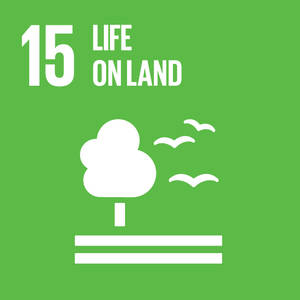What are forestry institutions?
Effective institutions are critical for improving forest management and development. They are public, private or mixed-ownership organizations operating at a local, subnational, national or international level that are formed to advance public or private interests in forestry. Forestry institutions include:
- public forestry agencies and enterprises;
- other ministries and public agencies (e.g. environment, energy and water);
- educational, training and research organizations;
- private-sector organizations (e.g. producer organizations);
- civil-society organizations;
- the informal sector; and
- international organizations and initiatives.
Forestry institutions can vary significantly depending on whether they are public or private, such as in their objectives and challenges and the extent to which they are reliant on market forces. For example, forest smallholders may organize themselves into forest producer organizations to improve access to markets, technology, resources and policy processes, thus overcoming certain economic constraints arising from their small size. Forest producer organizations are an example of a private forestry institution, and they can contribute to the social and economic objectives of their members and also help improve their forest management practices.
Public forestry institutions
Public forestry institutions
Public institutions, on the other hand, have a mandate to maintain and improve the public values provided by forests and their sustainability. Their functions (elaborated on in Box 1) typically encompass regulation (e.g. regulating the use of public forests through law enforcement and taxation), management (e.g. planning, inventorying and mapping), and facilitation (e.g. by providing extension services and guidance, and supervising forest management). Public institutions may also conduct research and training, thereby generating knowledge and trained personnel for the implementation of SFM.
Globally, about 80 percent of forests are under public ownership, and public forestry institutions therefore play a critical role in the promotion of SFM. Even when public forestlands are leased to private companies or communities (for example through concessions), public agencies play key roles in, among other things, designing, allocating and enforcing contracts, providing information and mediating disputes.
The importance of effective public forestry institutions for SFM
The importance of effective public forestry institutions for SFM
Many countries are facing significant challenges in putting their forest policies and legislation into practice (including to improve SFM). These challenges can be traced to the weak knowledge, capacities and resources that public forestry institutions often have at their disposal as well as to inadequate policy instruments and institutional arrangements. Weak capacities can mean that inadequate guidance is provided to forest users, illegal activities continue to take place in forests, forestry decisions are made without current and accurate information, and conflicting interests are not fairly addressed. Weak public institutions not only endanger the effective implementation of policies, they can also compromise the implementation or sustainability of projects. Effective forestry institutions are essential for good forest governance.
Box 1: Functions of public forestry institutions
Policy and regulatory functions
- Develop, implement and monitor forest policies, legislation and regulations
- Regulate the use of public, communal and private forests (e.g. law compliance, taxation, auctioning and permitting)
- Contribute to international processes related to forests
Forest planning and management functions
- Manage public forests, including planning, policing, inventorying and mapping, and silvicultural operations, including afforestation/reforestation, logging and the protection of forests from fire, pests and diseases
- Support and approve management planning and implementation in private forests
- Monitor and report on key forest indicators (e.g. forest area, volumes and annual allowable cuts) and provide information to government, the legislature, international bodies and the general public
Facilitating functions
- Coordinate and facilitate partnerships with other sectors and stakeholders, balancing sectoral interests
- Support local communities and the private sector in the management of forests and trees, including through the provision of information and technical assistance
- Support forest users by providing education and training, and strengthen the knowledge base through research and extension




